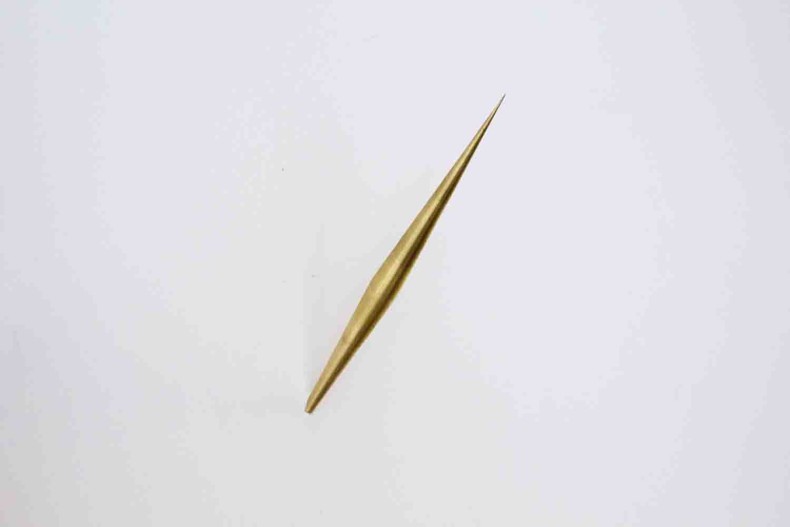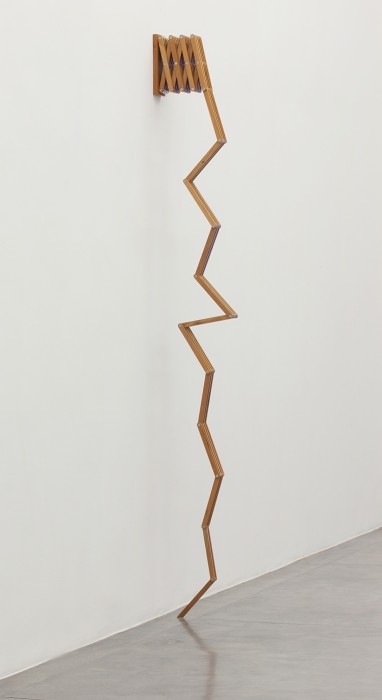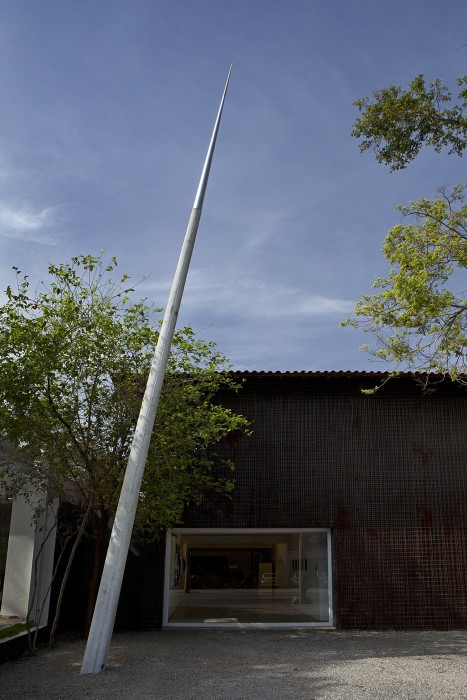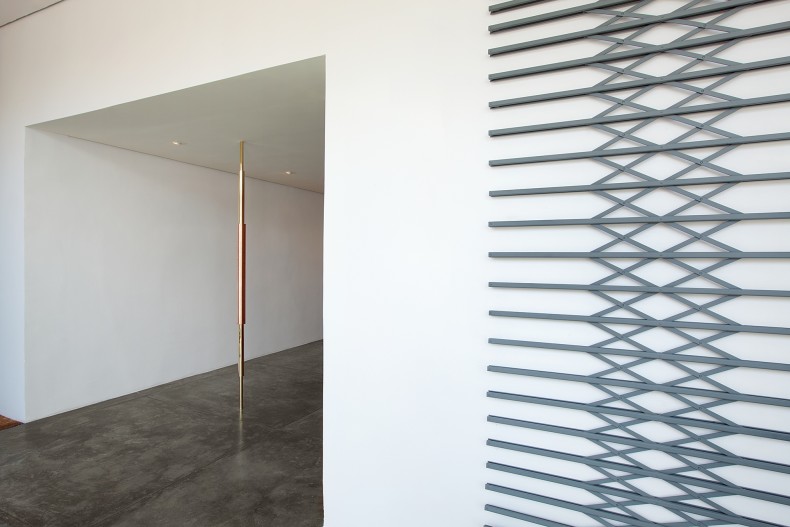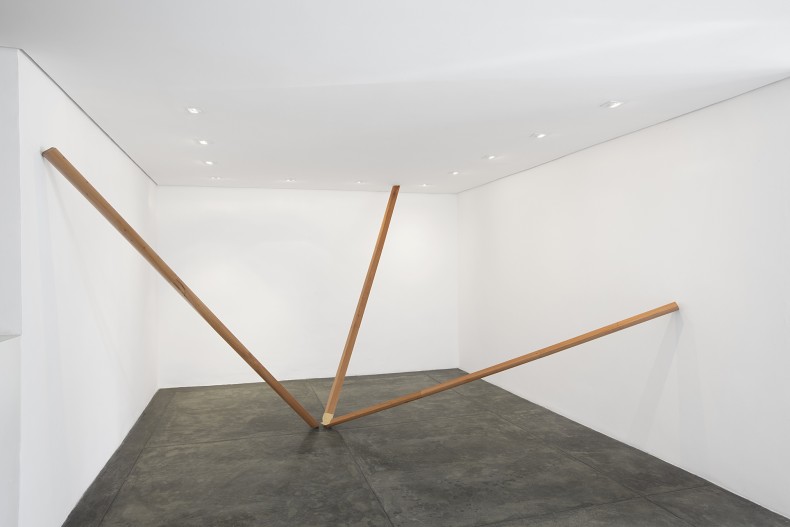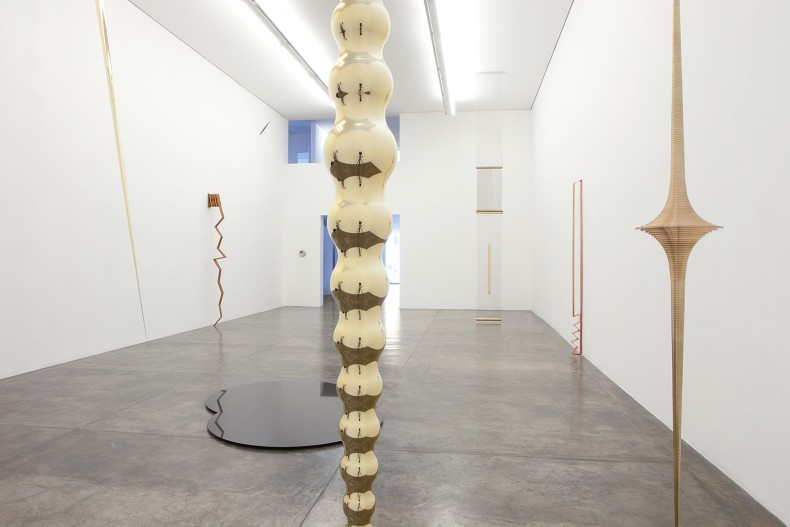On august 10, Saturday, from 11 am to 3 pm, Galeria Nara Roesler will inaugurate the show Pensamento pantográfico (pantographic thinking) by Artur Lescher. The show features ten recently produced, previously unseen works by the artist, some of which have been conceptually devised for the venue. Made from wood, basalt, steel and tin, the pieces are either physically or conceptually capable of expanding or collapsing unto themselves.
The sculptures, installations and objects expand and contract on the strength of joints and hinges – a physical feature shared by the pantograph (from the Greek pantos = all + graphos = to write), an articulated device for mechanically copying, enlarging or reducing drawings.
But this is not the only reason why the articulated parallelogram lends its name to the show. Although not all of the works bear a direct relation to the shape of the device, they all possess an intrinsic pantographic principle, for they can articulate ideas and/or images of expansion and retraction. Thus being, the pieces have a simpatico relationship with this principle.
“The title is also allusive to the pieces’ ability to write/describe, or rather to ‘draw,’ says Lescher.
Working with wood, Lescher has created pieces in jacaranda with metal hinges that suggest minimal, realistic interpretations of books using a simple paper fold.
The recently created series of “telescopic” works in aluminium gains depth on this show. The pieces are once again reminiscent of expansion and retraction, collapsible like telescopes. One of them is housed within the wall of the exhibition venue and can be activated by visitors, reiterating the inside-outside debate.
With similar poetics and proportions, Ou ou (2013), a tin-plated pendulum, features a progressive sequence of spheres, each of them proportionally reduced (or enlarged) in relation to the preceding one.
The Pensamento pantográfico show includes a roughly five-meter tall tin piece that resumes a line of research initiated by the artist in 2006. Pointed structures resembling needles seem to jolt out from the ceiling, inverting directions. “The piece is signalling, pointing toward the floor, to the concrete opposite the summit,” he notes.
The issues set forth in this show are developments of previous shows such as Metaméricos (2008) or Meta Métricos (2011), and are also affected by Inabsência, his last solo show in São Paulo, held in October 2012 at the São Paulo State Art Gallery (Pinacoteca). “I see infiltrations of issues that I have not fully mastered, and which escape me at this time. As a matter of fact, the show is a moment in which this game can be clarified.”


